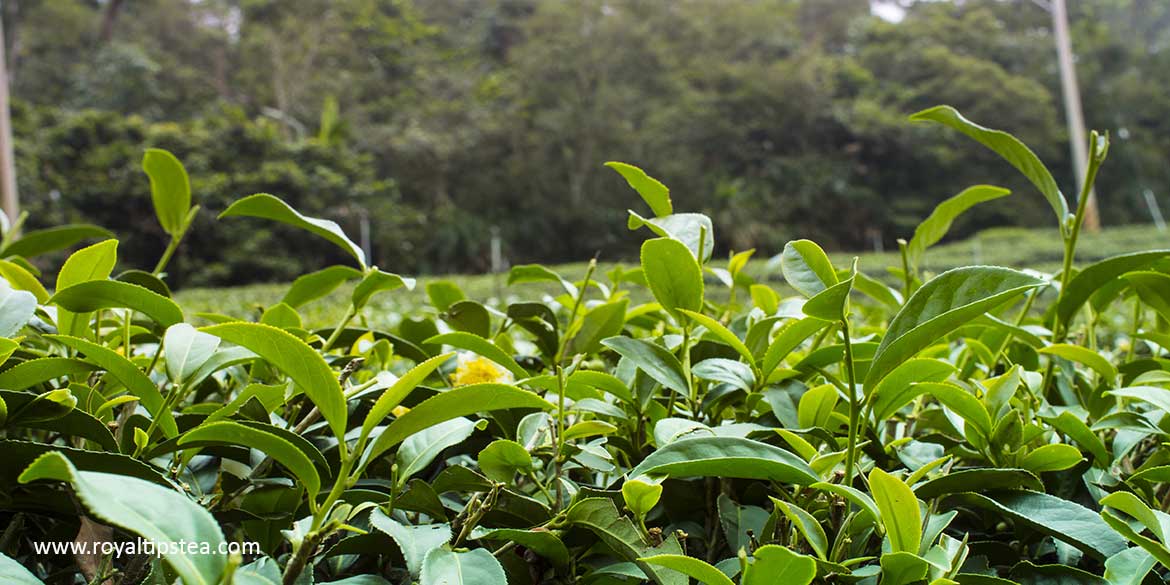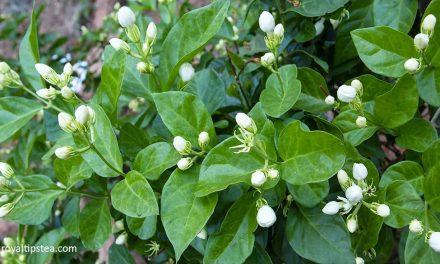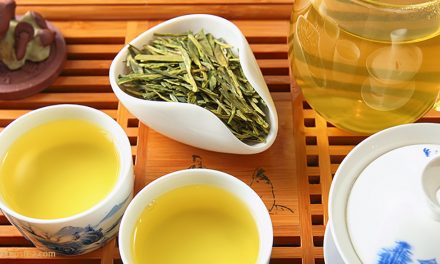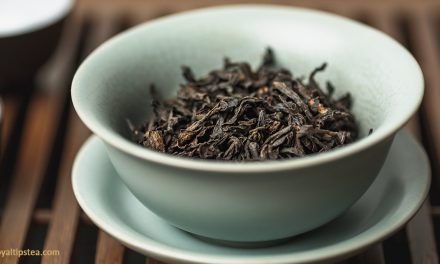What does Oriental Beauty oolong tea owe its popularity to?
Known for its fruity fragrance and bittersweet flavour with a touch of Muscat grape, this magnificent oolong tea is produced in a somewhat different manner to other oolongs. Firstly, the tea is left to wither for a longer period than is usual for oolongs due to the high level of humidity in the region where this tea is cultivated. The oxidation level of Oriental Beauty is higher than most other oolongs (about 70%), and the little shoots are then panned and rolled very carefully so as not to break them. All of these factors give this tea a unique aromatic dimension.
Aromatic compounds as a defence mechanism in Oriental Beauty tea leaves
Apart from the unusual manufacturing process, what really makes Oriental Beauty so popular is the fact that the young leaves of this fascinating oolong tea are invaded by tiny insects while they are growing. When they know they are being “attacked”, the plants activate their defence mechanisms, generating aromatic compounds that are designed to deter the insects from biting. These aroma compounds are enhanced during the manufacture of the tea. The damage caused by the insects also causes a light oxidation in the leaves while they are still growing on the plant. The same effect is achieved during the bruising or shaking stages of oolong processing , when the cells of the leaves are slightly broken in order to induce light oxidation, while at the same time preserving the leaves intact.
For the production of oolong teas, tea manufacturers usually select mature tea leaves (up to 3 or 4 tea leaf) without buds. Instead, Oriental Beauty oolong tea is manufactured using the unopened buds and the first two young leaves of the plant, as they are the most attractive to insects. The invasion usually occurs during the summer months and causes the price of tea harvested in this period to shoot up.
Defence mechanisms in plants are more complex than may appear at first glance. When a plant feels threatened, it will adopt a specific defence response depending on the nature of the attack. This means that not all insects will cause the same molecular changes in the plant as a response to attack and potential damage. In the case of Oriental Beauty the insect responsible for the production of volatile aromatic compounds in the tea leaves is called Empoasca Onukii (Cicadellidae family), or Jacobiasca formosana, commonly known as leafhoppers. To make the highest quality Oriental Beauty, the producer selects only the leaves that are attacked by the insect, which increases the fragrance of the oolong tea. This work requires a great deal of knowledge, as the amount of leaf damage also influences the flavour of the tea. Even so, the infestation does not occur in all tea plantations and producers tend to manage their gardens in the most natural way possible in order to attract the tiny creatures.
The role of terpenes in the development of taste in Oriental Beauty oolong
Terpenes are volatile components that are responsible for the fragrance of oolong and black teas, and play an essential role in the formation of the complex aromatic range of flavours found in Oriental Beauty oolong tea. Among the most important are linalool and its derivatives, geranium, benzyl alcohol and phenethyl alcohol. Linalool and geranium terpenes contribute to the aroma of Muscat both in oriental beauty and in the best Darjeeling teas. The insect’s bites cause a light oxidation of the tea leaves while they are still growing on the plant, inducing the formation of other terpene components, such as diol (adds a honey and citrus taste) and hotrienol (also present in wines along with linalool and geranium and whose effect increases the muscat aroma). Terpenes usually interact in such a way that one can intensify the aroma of the other, so the leaves of Oriental Beauty that have been invaded by insects will possess an even more intense and more complex flavour. However, this can be a difficult tea to find and it is usually rather expensive. The biggest dilemma is that the appearance of the tea leaf alone is not enough to determine whether or not it was infested by the insects. What matters truly is that Oriental Beauty is a very special tea in itself, because its manufacturing process gives it a distinctive flavour that many sellers attribute to the insects in order to create a greater interest in this wonderful tea.
Oriental Beauty, an oolong tea with many names and a long history
The Chinese name for this oolong tea is Dong fan Mei Ren (東方美人) and is translated as “Oriental Beauty”. It is also commonly called Formosa Oolong, Eastern Beauty Oolong, Champagne Oolong, Bai Hao Oolong (white tips Oolong), Bragger’s Oolong, etc. Bai Hao Oolong is translated as “white-tipped Oolong tea” due to the high number of white buds that are used in the production of this tea.
Several stories are told about the origin of Oriental Beauty. One of them states that, in the past, tea leaves that were damaged by insects were considered defective and therefore discarded. One day, a producer decided to process the damaged leaves in an effort to take advantage of the harvest. The taste of the tea that was obtained from these leaves was so spectacular that the producer was able to sell it at a very high price. He boasted about the high price to his neighbours and so the tea was named “Bragger’s Tea” (Pengfeng tea). What is certain is that during the time when the island of Taiwan was under Japanese jurisdiction, the Government of Japan actively promoted the tea industry, emphasizing the quality of production and expansion strategies in the tea market. China in turn boosted the propagation of tea culture when the island passed back to its control after the Second World War. The fusion of different cultures was an enriching experience for tea producers in Taiwan and contributed to the success and fame of the spectacular Taiwanese teas as we know them today.




